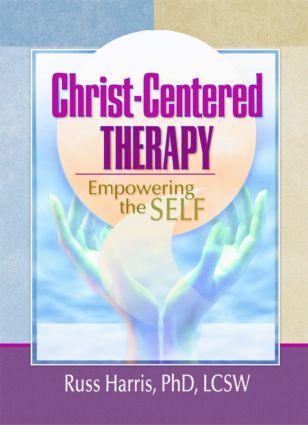
Zustellung: Sa, 26.07. - Fr, 01.08.
Versand in 3-4 Wochen
VersandkostenfreiChrist-Centered Therapy: Empowering the Self brings together Christian faith with the Internal Family System (IFS) model. This powerful therapeutic model posits a self surrounded by subpersonalities who carry anger, fear, distrust, and other negative responses. This book provides exercises and visual aids to help both client and counselor, including worksheets, a "parts map" for client and counselor to use collaboratively, case studies, and a clinical outline listing the interventions in sequence. Christ-Centered Therapy: Empowering the Self is essential for Christian counselors and for non-Christian counselors who are seeking more effective ways to treat Christian clients. To view an excerpt online, find the book in our QuickSearch catalog at www.HaworthPress.com.
Inhaltsverzeichnis
Contents
- Acknowledgments
- Introduction: The Need for a Breakthrough: A Personal Note
- A New Model of Personality and Treatment
- Application of IFS in a Christ-Centered Context
- Those Who Will Find This Book Helpful
- An Invitation to a Journey of Discovery
- Contents and Organization
- Exercise: Beginning the Personal Application
- Section I: The Internal Family System Model
- Chapter 1. Basic Internal Family System Concepts
- Multiplicity and Systems: Two Foundational Concepts of IFS
- Viewing the Individual As a System: The Second Concept
- Characteristics of Parts and Self in the Internal System
- The Three-Group System of Parts
- Parts Stuck in Extreme States
- Chapter Summary
- Exercise: Seeking Your Internal Family System
- Chapter 2. IFS Therapy: Changing the Internal System
- Raymond: A Case Study of Changing the Internal System
- Introducing the IFS Model
- Getting to Know the Territory
- Entering the Client's System
- Depolarizing Part
- Identifying Chains that Bind the Parts
- Releasing the Chains by Unburdening and Retrieving a Part from the Past
- Clinical Outline for Working with Individuals
- Exercise: Get to Know a Part
- Section II: The Christ-Centered IFS Model
- Chapter 3. Christ-Centered IFS Concepts
- CCIFS, an Extension of IFS Therapy into Christian Spirituality
- Three Foundational Structures of the Internal System
- Pam's Spiritual Journey
- The Internal Struggle of Christians
- Chapter Summary
- Exercise: Seeking Your Own Internal Organization
- Chapter 4. Christ-Centered IFS Therapy
- Assessing the Appropriateness of Using the CCIFS Model
- Introducing the CCIFS Model
- Setting Goals
- Moving Ahead
- The Mountain Exercise for Christian Clients
- Pam's Guidelines for Relating to Ronald
- Healing with Jesus: Retrieving and Unburdening a Part Stuck in the Past
- The Healing of a Memory with Jesus
- Summary of Procedures Unique to CCIFS Therapy
- Clinical Outline of CCIFS Therapy for Working with Individuals
- The Mountain Exercise
- Section III: Equipping Clients with Leadership Tools for Meeting Life Situations
- Chapter 5. Cleaning the Slate and Keeping It Clean: The Forgiveness Process
- Step 1: Identifying the Existence of Resentments
- Step 2: Introducing the Three-Column Worksheet and the Main Principles
- Step 3: Helping the Client Assess the Usefulness and Timing of the Resentment Process
- Step 4: Listing the Resentments--The Work of Column 1
- Step 5: Listing the Effects of Offending Behaviors--Column 2 Work
- Step 6: Listing Anticipated Effects of Releasing Resentments--Column 3 Work
- Step 7: Helping the Client Assess Readiness to Release Resentments
- Step 8: Designing a Ritual for Releasing Resentments
- Step 9: Assimilating the Effects of Releasing
- Step 10: Considering the Wisdom of Encountering the Offender
- The Forgiveness Process with Wrongs Experienced As Adults
- Keeping the Slate Clean: A Shorthand Victimless Process for Current Situations
- Chapter Summary
- Clinical Outline of the Forgiveness Process
- Exercise: Wiping Your Own Slate Clean
- Chapter 6. Spotting the Parts' Downward Spiral: The First Sequence of the Flowchart
- Kirsten's Situation
- Observing the Client's Need for Leadership Tools
- Describing the Flowchart and Helping the Client to Assess the Time for Its Use
- Developing a Rough Draft of the Parts' Survival Sequence
- Testing the Rough Draft in a Live Situation
- Lifting the Veil: Connecting th
Produktdetails
Erscheinungsdatum
07. Januar 2002
Sprache
englisch
Seitenanzahl
302
Autor/Autorin
Harold G Koenig, Russ Harris
Verlag/Hersteller
Produktart
kartoniert
Gewicht
467 g
Größe (L/B/H)
212/153/21 mm
ISBN
9780789012289
Entdecken Sie mehr
Bewertungen
0 Bewertungen
Es wurden noch keine Bewertungen abgegeben. Schreiben Sie die erste Bewertung zu "Christ-Centered Therapy" und helfen Sie damit anderen bei der Kaufentscheidung.







